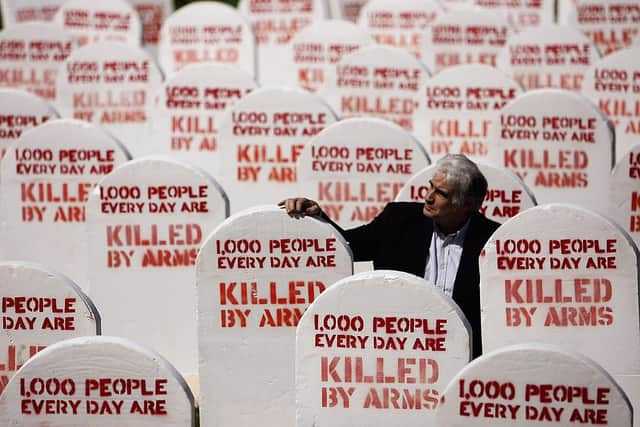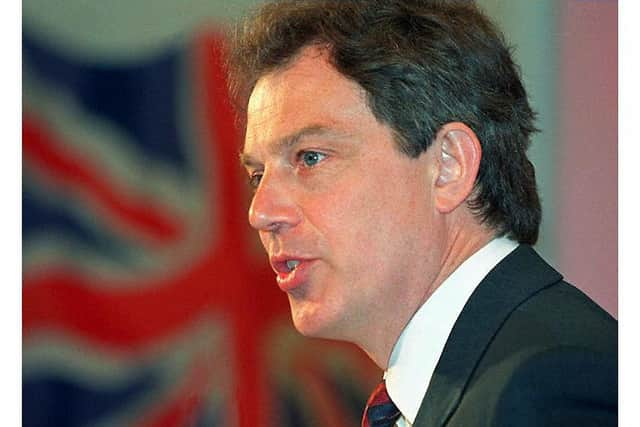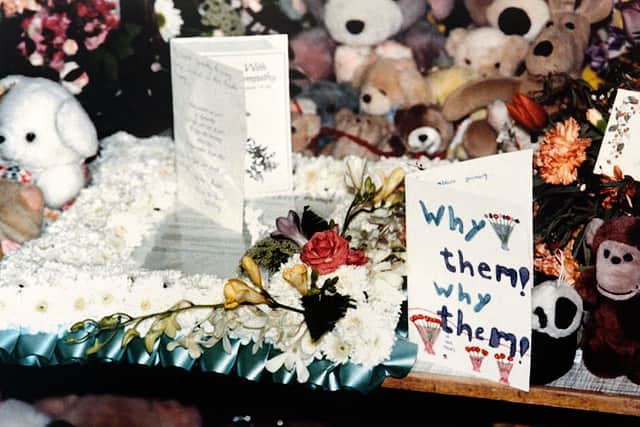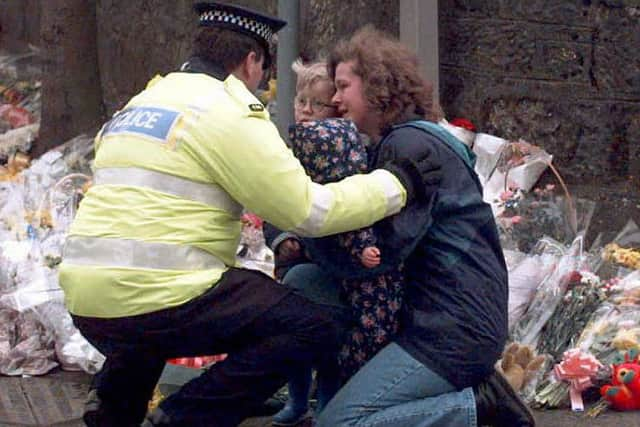Dunblane Massacre: when was UK’s worst school shooting, what happened - and how did it change the UK gun law?
and live on Freeview channel 276
A shooting at Robb Elementary School in Uvalde, Texas, which has seen at least 19 children and two adults killed, marks the 27th school shooting in the US this year alone.
With the conversation around gun control in the US still ongoing, many have drawn comparisons between the attack that took place in Texas on Tuesday (24 May) with that of the Dunblane Massacre which happened in a primary school in Scotland in 1996.
Advertisement
Hide AdAdvertisement
Hide AdThis is how the Dunblane attack changed gun laws and regulations in the UK forever.
How did Dunblane change gun laws in the UK?
As a result of the Dunblane massacre, there were immediate calls to ban handguns.
The tragedy sparked the beginning of the Snowdrop campaign which sought to tighten the UK’s gun laws after it was revealed that the attack had been carried out using a handgun and ammunition that were both legally obtained.


The Cullen Report, an inquiry into the massacre led by Lord Cullen, also recommended that the government introduce tighter controls on handgun ownership.
Advertisement
Hide AdAdvertisement
Hide AdThe Snowdrop campaign organised a petition of more than 750,000 signatures in a call to action over gun control.
As a result of the successful campaign, at the end of 1997, Conservative Prime Minister John Major passed the Firearm (Amendment) Act 1997, which banned high-calibre handguns like those used in the Dunblane massacre - but allowed .22 rimfire handguns to be “used and kept” in licensed clubs.
When the Conservative party lost to Labour in the UK general election, Tony Blair, the leader of the Labour Party, supplemented Majors Firearm (Amendment) Act 1997 with the Firearms (Amendment) (No. 2) Act 1997, as promised during his campaign.


This updated act, which was approved by a wide margin in the House of Commons, took gun control a step further and banned the ownership of .22 handguns, effectively banning all private use handguns.
Advertisement
Hide AdAdvertisement
Hide AdTo enforce these new laws, the Government launched a £150 million buyback program that saw the surrender of more than 160,000 guns and 700 tons of ammunition.
What happened in the Dunblane massacre?
On the morning of 13 March 1996, Thomas Hamilton, age 43, was seen by a neighbour scraping the ice off of a white van outside his home on Kent Road in Stirling at around 8:15am.
At roughly 9:30am, he parked said van beside a telegraph pole in the lower car park of Dunblane Primary School. Prior to entering the school, Hamilton took a pair of pliers and cut the telephone wires at the foot of the telegraph pole. These wires did not serve the school, but a number of the adjoining houses.


Hamilton then entered Dunblane Primary School armed with four legally held handguns - two 9mm Browning HP pistols and two Smith & Wesson M19 .357 Magnum revolvers - and 743 cartridges of ammunition.
Advertisement
Hide AdAdvertisement
Hide AdHe entered the school by way of a door to the north west side of the building which was next to the toilets beside the gym. Inside the gym was a class of 28 Primary 1 pupils that were preparing for their morning PE class, alongside three adult members of staff.


When Hamilton entered the gym, he opened fire, shooting rapidly and randomly in what would become the deadliest mass shooting in UK history.
Hamilton killed 16 pupils and one teacher, and injured a further 15 before he killed himself.
Who was Thomas Hamilton?
Hamilton had been a former shopkeeper who was born on 10 May 1962 in Glasgow. Throughout his life, Hamilton had been the head of a number of youth clubs - and had been subject to several police complaints regarding inappropriate behaviour towards young boys.
Advertisement
Hide AdAdvertisement
Hide AdA 1996 profile of Hamilton by the Independent said that the “boys whom he ordered to strip and run around in swimming trunks laughed at him behind his back and called him Mr Creepy” and that his neighbours on Kent Road who looked through his windows saw “disturbing (but now blatantly pornographic) pictures of boys in swimming trunks covering his walls”.
He was briefly a Scout leader in 1973 however complaints were made about this appointment, including claims made about Scouts being forced to sleep near Hamilton in his van during outdoor expeditions.
The Cullen Report, said: “A number of complaints were made about his leadership, the most serious of which were concerned with two occasions when the boys who were in his charge were forced to sleep overnight in his company in a van during very cold weather at Aviemore.
“His excuse on the first occasion was that the intended accommodation had been double booked and he was warned of the need to double check such arrangements. On the latter occasion it was found that no booking had been made by him on either of these occasions.”
Advertisement
Hide AdAdvertisement
Hide AdAfter being blacklisted by the Scouts Association, Hamilton attempted to set up a number of boys clubs. The report said that Hamilton “appeared to show an unusual interest in individual boys after only one appearance at the club and to put pressure on them to obtain parental permission to attend one of his summer camps”.
On 14 February 1977, Hamilton was granted a firearm certificate which, the report said, at the outset he “acquired small-bore firearms”. In December 1979, Hamiton moved on to full-bore.
The Cullen Report states that there is evidence that Hamilton, on a number of occasions, “brought firearms to the homes of other people in order to show them off”.
“One of these occasions was reported to the police. Towards the end of 1988 Thomas Hamilton took two handguns and a semi-automatic machine gun to the home of a family in Linlithgow,” the Cullen Report said.
